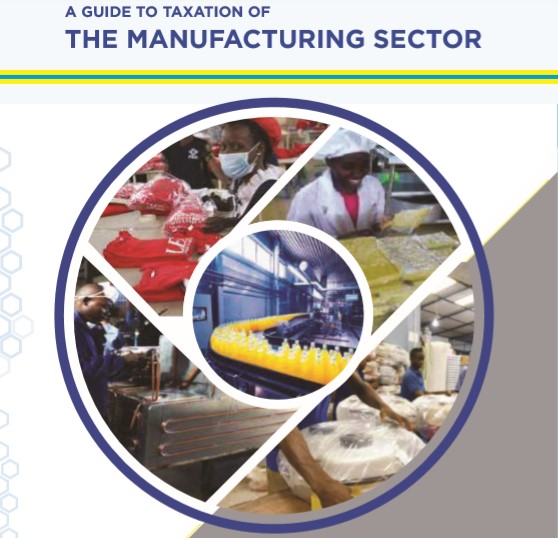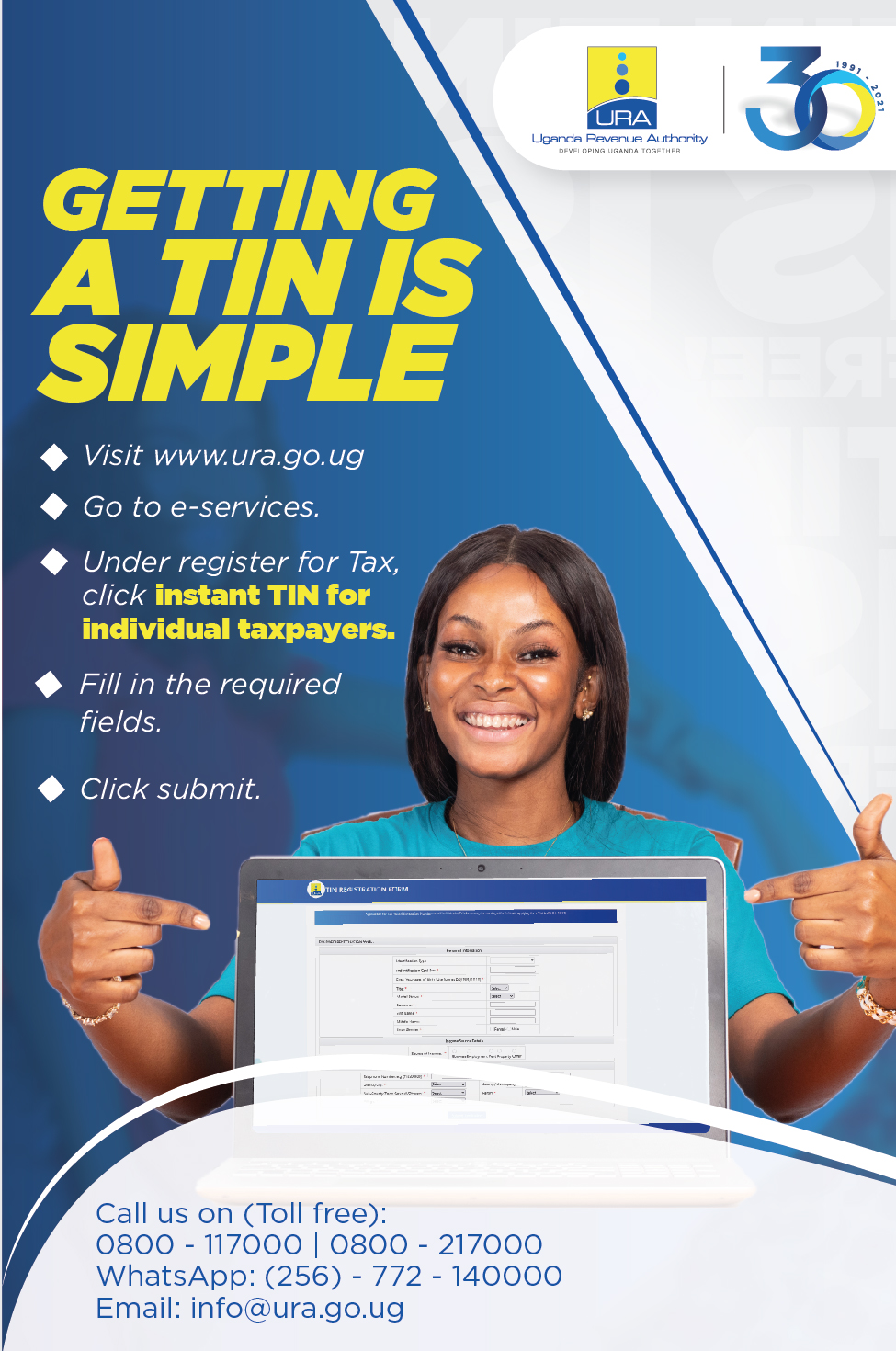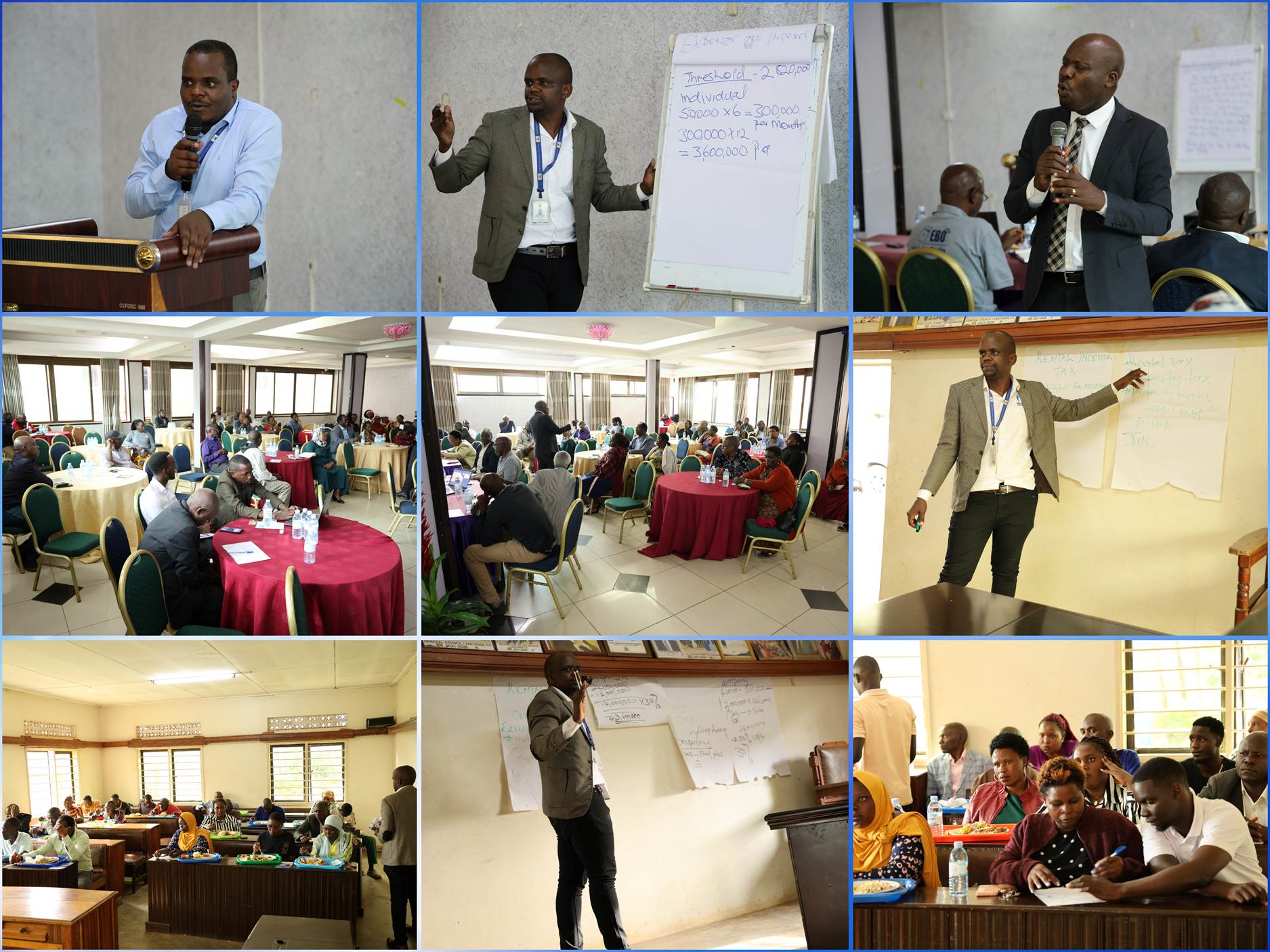Manufacturing is a process of physically or chemically transforming raw materials, substances, or components into new products. The raw materials, substances, or components transformed are products of agriculture, forestry, fishing, mining or quarrying as well as products of other manufacturing activities.
1) Units that directly process materials or
2) Units that contract with other units to process their materials for them.
The output of a manufacturing process may be a finished product in the sense that it is ready for utilization or consumption e.g. ready beer, cement, clothes and sugar among others.
It may be semi-finished products (Intermediate), i.e. products used as inputs for further manufacturing e.g. sugar used as a raw material for manufacturing of beer, spirits; milk used for processing cheese, ice-cream, primary ALUMINIUM is an input to ALUMINIUM wires, while ALUMINIUM wire is an input for the manufacture of fabricated wire products.
• Manufacture of food products
• Manufacture of beverages
• Manufacture of tobacco products
• Manufacture of textiles
• Manufacture of wearing apparel
• Manufacture of leather and related products
• Manufacture of wood and of products of wood and cork, except furniture;
• Manufacture of articles of straw and plaiting materials
• Manufacture of paper and paper products
• Printing and reproduction of recorded media
• Manufacture of coke and refined petroleum products
• Manufacture of chemicals and chemical products
• Manufacture of pharmaceuticals, medicinal chemical and botanical products
• Manufacture of rubber and plastics products
• Manufacture of other non-metallic mineral products
• Manufacture of basic metals
• Manufacture of fabricated metal products, except machinery and equipment
• Manufacture of computer, electronic and optical products
• Manufacture of electrical equipment
• Manufacture of machinery and equipment
• Manufacture of motor vehicles, trailers and semi-trailers
• Manufacture of other transport equipment
• Manufacture of furniture
BUSINESS/COMPANY REGISTRATION IN UGANDA
The legal requirements for the incorporation / registration / formation of a company in Uganda are contained in the Companies Act, 2012.
All businesses in Uganda are required to register with Uganda Registration Service Bureau (URSB) to formalize their legal status. The entity will receive either a Certificate of registration (if registered in your own names or business names) or Certificate of Incorporation if registered as a Limited liability Company.
The legal status is to be registered and cleared by different interest stakeholders below who have stake in the entity business.
Upon registration, manufacturing companies are required to comply with the requirements of statutory bodies like;
UIA mainly markets investment opportunities; promotes packaged investment projects; ensures local and foreign investors have access to information, especially about the business environment so as to make more informed business decisions; and offers business support, advisory and advocacy services.
Manufacturing companies are required to certify with UNBS. Certification refers to the confirmation of certain characteristics of a product, person, or an organization.
The UNBS Product Certification Scheme aims at providing Third Party Guarantee of quality, safety and reliability of products to the consumers.
NEMA is a body responsible for environmental management in Uganda. It’s majorly responsible for issuing permits to manufacturing firms that are dealing in activities likely to cause irreversible damage to the environment.
At KCCA/LOCAL GOVERNMENT, upon approval of a Trading License application, you will be given a Trading License to enable you operate your business in a delineated Local Authority country wide.
A person liable to pay tax under a tax law shall apply to the Commissioner for registration with Uganda Revenue Authority (URA). On successful registration, the Commissioner shall issue to every applicant a Tax Identification Number (TIN).
A person’s TIN shall be indicated on any return, notice, communication, or other document furnished, lodged, or used for the purposes of a tax law.
A TIN is personal to the person to whom it has been issued and shall not be used by another person.
Note: A TIN is obtained free of charge and therefore no one should charge you for it.
Section 135(3) of the Income Tax Act (ITA), requires that every local authority, Government institution, or regulatory body shall require a Taxpayer Identification Number from any person applying for a license or any form of authorization necessary for purposes of conducting any business in Uganda.
A TIN can be acquired through any of the processes below:
a. Visit the URA web portal
b. Download the appropriate registration form (Individual or Non Individual), c. Complete the form by filling in the mandatory fields (boxes)
d. Upload and submit online the completed form e .Receive an acknowledgment notice
f. Print a copy of the form and sign it and together with the necessary attachments submit to the nearest URA office.
g. Receive notification of approved or rejected TIN application
h. Print TIN Certificate sent to the email registered with URA from anywhere
In case a taxpayer cannot register online, he or she can walk into any of the URA offices or One Stop Centre located in any of the Municipality or KCCA division and assistance shall be provided to complete the registration process. Ensure that you move along with the necessary attachments as listed above.
In case of failure to do any of the above, call the Contact Centre: 0800217000 or
0800117000 (Toll free) or send an email to services@ura.go.ug
The key requirements for TIN registration include;
• For an individual: A National ID or any two of the following identification documents; Village ID, Employment ID, Passport, Driving Permit, Voter’s Card, Bank Statement, Work Permit, Financial Card, Visa, NSSF Card etc. This is also applicable to company directors.
• For a non-individual: Certificate of Incorporation/Certificate of Registration, Company Form 20 showing the directors of the company, and any other legal documents that confirms existence.
• For an individual with business, a business registration certificate is required.
• In case the directors do not have TIN’s, then their application(s) must be submitted together with the company application form under “group registration”.
• A valid email address and a mobile telephone number
• A referee – any person known to applicant and has a TIN
• An employee shall attach proof of employment
.Acquiring a TIN enables you to:
• Import or export goods within and outside Uganda.
• Claim tax benefits that accrue to you e.g. tax refunds etc.
• Access bank loans.
• Acquire a trading license from Local Government / KCCA to undertake business in their jurisdiction.
• Register your Motor Vehicle
• Process land transactions above 50 Million UGX.
The TIN acts as a security measure on transactions regarding some assets e.g. already validated motor vehicles, titled land since a notification is automatically sent to the owner’s TIN account and registered email.
NOTE:
A local authority, government institution or regulatory body shall not issue a license or any form of authorization necessary for purposes of conducting any business in Uganda to any person who does not have a Tax Identification Number including one
issued by foreign tax authorities with whom Uganda has a tax treaty or agreement for the exchange of information.
URA in partnership with Uganda National Bureau of Standards (UNBS) introduced the Digital Tracking Solution (DTS) as a track & trace platform that sends production and importation data for specific products immediately, to both URA and UNBS.
The Digital Tracking Solution involves the stamping of products with a digital stamp. The digital stamps comprise of both;
a)Digital Tax Stamps – for tax purposes (URA) and; b)Conformity Stamps – for safety standards certification (UNBS)
Goods affected by DTS include:
a) All excisable goods; starting with wines, spirits, water, cigarettes, beer, soda, cement and sugar.
b) Other goods as gazetted by the Commissioner.
NB. These products will not be allowed on the market without stamps.
The Digital Tracking Solution is used by both local manufacturers and importers of products, specified by the Commissioner by a notice in a gazette and it is mandatory for these taxpayers to apply tax stamps.
What is a Digital Tax Stamp?
A Digital Tax Stamp is a marking that is applied to goods or their packaging and contains; security features and codes to prevent counterfeiting of goods and enable track and trace capabilities.
a) Ability to conveniently verify and trace all specified goods throughout the distribution chain
b) Make instant requests for report of one’s daily, weekly, monthly transactions
c) Improved record keeping since one can track their transactions
d) Facilitation to comply through immediate access of details of your production/ imports which in turn facilitates easy processing of VAT refunds and quickens return filing
e) For importers, the system quickens customs clearing as the information would have been captured beforehand
f) Reduction in smuggling and dumping of goods hence controlling illicit trade and encouraging fair market competition
a) An offender who attempts to acquire or acquires or sells a tax stamp without goods shall be liable to a fine not exceeding Shs. 10,000,000 or imprisonment for a term not exceeding five years or both upon conviction
b) A person who acquires tax stamps with the Commissioner’s authority and affixes them on goods other than those approved by the Commissioner commits an offence and is liable to double the excise duty due on the goods or Shs. 10,000,000 whichever is higher, upon conviction.
| Rights | Obligations |
| • To object to tax assessments where you are not contented with the tax assessed and even appeal for a review or to the Commissioner General, or to courts of law where you feel you have not been given satisfactory hearing. • You have a right to equity: Tax laws and procedures shall be applied consistently to you All your tax affairs handled with impartiality You and your agent(s) shall be presumed honest until proven otherwise You shall always pay the correct tax • Your tax affairs shall be kept secret and any tax information in our possession shall be used in accordance with the law. • You and your authorized agent(s) shall be provided with clear, precise and timely information. • You will receive courteous and professional services at all time | • Comply with all the taxation requirements and regulations. • Make full disclosure of information and correct declaration of all transactions at all times. • Pay the correct tax at the right time and place as required by the relevant laws. • Not indulge in any form of tax evasion and other illegal practices. • In handling your tax matters, you and or your appointed agent(s) shall be expected to deal and cooperate only with the Authority’s authorized staff. • Quote your Tax Identification Number (TIN) for all dealings with URA. • Request for a proper receipt for all your purchases and keep records properly. |
BOOK KEEPING AND ACCOUNTS FOR TAX PURPOSES
- It is very important for taxpayers to;
– Keep proper records of all business transactions in English language;
– Keep records such that it is easy to determine their tax liability;
– Keep records for five years after the end of the tax period to which they relate for future reference.
7
- In case a record is necessary for a proceeding which started before the end of the 5 year period, a taxpayer shall keep the record until the end of the proceedings.
- The records kept should contain sufficient transaction information and should be saved in a format that is capable of being recovered and converted to a standard understandable record format.
- A taxpayer who wishes to keep records in a different language or currency shall apply in writing with clear reasons to the commissioner for permission.
- Where a record is not in English, the taxpayer will be required to meet the cost of translation into English by a translator approved by the Commissioner. However, the taxpayer shall file a tax return or provide other correspondence with the Commissioner in English.
A person who no longer fulfills the registration conditions may, in the prescribed manner, apply to the Commissioner to be deregistered.
• The Commissioner shall by notice in writing, deregister a person if he is convinced that the person no longer satisfies the registration conditions
• A person who temporarily closes a business with an intention of resuming, shall not be deregistered but apply to the commissioner in writing to have his TIN deactivated and later on reactivated when they resume business
The penalty for a person who fails to apply for registration, cancel a registration or notify the Commissioner of a change in registration or circumstances is;
i. a fine not exceeding Shs. 3,000,000 or imprisonment not exceeding six years or both on conviction if the failure/act was done knowingly or recklessly.
ii. to a fine not exceeding Shs. 1,000,000 or imprisonment not exceeding two years or both on conviction in any other case.
• The penalty to be paid under this section shall be recovered and collected as unpaid tax.
A TIN is personal to the person to whom it has been issued and shall not be used by another person.
• A person who uses a false TIN on a tax return or other document prescribed or used for the purposes of a tax law, knowingly or recklessly or not, commits an offence and is liable on conviction to a fine not exceeding Shs. 3,000,000 or imprisonment not exceeding six years or both.
The penalty for knowingly or recklessly or not failing to maintain records as required under any tax law is a fine not exceeding Shs.2,000,000 or imprisonment not exceeding six years or both on conviction.
Note: A taxpayer, who cannot effectively handle his tax matters, can appoint a tax agent to transact with URA on his/her behalf.
WHO IS A TAX AGENT?
A tax agent is a person licensed by the Tax Agents Registration Committee
(TARC) to handle tax related issues on behalf of the taxpayer. An agent can be an individual, partnership, or company. An agent engages in the following activities on behalf of the taxpayer:
• Preparation, certification, and filing tax returns, or other statements or reports required by the Authority.
• Preparation of requests for ruling, petitions for reinvestigation, protests, objections, requests for refund or tax certificates, compromise settlements and/or reductions of tax liabilities and other official papers and correspondences with the Authority.
• Attending meetings and hearings on behalf of the taxpayer in all matters relating to a taxpayer rights, privileges or liabilities under the laws administered by the Authority
WHO REQUIRES A TAX AGENT?
Taxpayers who need tax advisory services.
Any person dealing in manufacturing business is required to be registered for income tax. Income tax applies generally to all types of persons who derive income, whether an individual, non-individual or partnership.
Resident persons are taxed on worldwide income, while non-resident persons are taxed only on income derived from sources in Uganda.
The taxpayer is required to make a self-assessment by calculating taxable income and then calculate the tax due on that income. The taxpayer’s calculations are reviewed by revenue officials when returns are filed to ensure that the declarations made are correct. The income tax rates apply differently to
A. Taxpayers with small businesses.
B. Non Individuals
C. Individuals
This is imposed on small taxpayers (both individuals and non-individuals) whose annual turnover is below UGX 150 million.
The presumptive tax rates are based on turnover, however there is a standard of record keeping. Small businesses with no records will pay tax on a fixed basis whereas those with records will pay tax as a percentage of turnover.
| Gross turnover per annum | With records | Without records |
| Not exceeding UGX 10 million | NIL | NIL |
| Exceeding UGX 10 million but does not exceed UGX 30 million | 0.4% of annual turnover in excess of 10 million | UGX 80,000 |
| Exceeding UGX 30 million but does not exceed UGX 50 million | UGX 80,000 plus 0.5% of annual turnover in excess of UGX 30 million | UGX 200,000 |
| Exceeding UGX 50 million but does not exceed UGX 80 million | UGX 180,000 plus 0.6% of annual turnover in excess of UGX 50 million | UGX 400,000 |
| Exceeding UGX 80 million but does not exceed UGX 150 million | 360,000 plus 0.7% of annual turnover in excess of UGX 80 million | UGX 900,000 |
Note:
The presumptive process provides an option for the taxpayer to select the business location, type of business, and generate an assessment/Payment Registration Slip which also acts as the RETURN for that year of income.
The income tax rate for a company i.e. a body of persons, corporate or unincorporated, created or recognized under any law in Uganda or
Elsewhere, is 30% of the entity’s CHARGEABLE INCOME (gross income less tax allowable deductions).
Income tax worked example for a non-individual in business.
| Production Costs | UGX | UGX |
| Opening stock of raw materials | 100,000 | |
| Add purchases of raw materials | 200,000 | |
| Less Closing stock of raw materials | (50,000) | |
| Cost of raw materials | 250,000 | |
| Cost of direct labor | 200,000 | |
| Direct expenses | 100,000 | |
| Prime Costs | 550,000 | |
| Add factory Overheads | ||
| Factory rent | 10,000 | |
| Power | 56,000 | |
| Indirect wages | 13,000 | |
| Total production costs | 629,000 |
Calculate the tax payable to Uganda Revenue Authority by ABC limited.
| TRADING ACCOUNT | UGX | UGX |
| Sale of finished goods | 1,200,000 | |
| Add other income(e.g. commission) | 200,000 | |
| Total Sales | 1,400,000 | |
| Less cost of goods sold: | ||
| Opening stock | 15,000 | |
| Add Production cost (fig from above) | 669,000 | |
| Less closing stock of finished goods | (50,000) | |
| Total cost of sales | (634,000) | |
| Gross profit | 766,000 | |
| Less Expenses | ||
| Administrative expenses | (12,000) | |
| Selling and distribution expenses | (15,000) | |
| Financial expenses | (26,000) | |
| total | (53000) | |
| Net profit for the year | 713,000 | |
| Tax 30%*713,000 | 213,900 |
The tax payable to URA will be UGX 213,900.
NOTE;
If a taxpayer incurs a loss, then tax payable would be zero.
The income tax rate for individuals depends on the income bracket in which the individual falls. Resident individuals enjoy a tax free annual income threshold of UGX. 2,820,000 per annum. The balance is taxed at 10%, 20% or 30% depending on the income bracket. Individuals who earn above UGX 120,000,000 per annum pay an additional 10% on the income above UGX 120 million.
| ANNUAL CHARGEABLE INCOME (CY) IN UGX | RATE OF TAX Residents |
| 0 to 2,820,000 | Nil |
| 2,820,000 to 4,020,000 | (CY – 2,820,000UGX) x 10% |
| 4,020,000 to 4,920,000 | (CY – 4,020,000UGX) x 20% + 120,000UGX |
| 4,920,000 to 120,000,000 | (CY – 4,920,000UGX) x 30% + 300,000UGX |
| Above 120,000,000 | [(CY – 4,920,000UGX) x 30% + 300,000UGX] + [(CY – 120,000,000UGX) x 10%] |
| ANNUAL CHARGEABLE INCOME (CY) IN UGX | RATE OF TAX Non-residents |
| 0 to 4,020,000 | CY x 10% |
| 4,020,000 to 4,920,000 | (CY – 4,020,000UGX) x 20% + 402,000UGX |
| 4,920,000 to 120,000,000 | (CY – 4,920,000UGX) x 30% + 582,000UGX |
| Above 120,000,000 | [(CY – 4,920,000UGX) x 30% + 582,000UGX] +[(CY – 120,000,000UGX) x 10%] |
Income tax worked example for a resident individual in business.
Using the example of ABC manufacturing above; assuming its registered as an individual, and is a resident, the tax payable would be:
Answer
The chargeable Income 713,000 falls in the bracket (0 to 2,820,000 UGX ) Tax payable =Nil
Any person dealing in manufacturing business and offers employment is required to be registered for Pay As You Earn (PAYE).
Employment refers to a;
• Position of an individual in employment of another Person,
• Directorship of a company, a position entitling the holder to a fixed or ascertainable remuneration.
• Holding or acting in a public office.
Employment income includes gross cash received in form of; salary, leave pay, payment in lieu of leave, overtime pay, fees, commission, gratuity, bonus, allowances (entertainment, duty, utility, welfare, housing, medical, sitting, transport or any other allowances).
Benefits in kind include use of employer office Motor vehicle for personal errands, free accommodation, use of driver, domestic workers and free utilities (power, water) paid by the employer on behalf of the employee. The benefits in kind are computed using particular formulae in the 3rd Schedule of the Income Tax Act.
The PAYE is tax withheld from all employees earning a salary income above the stated threshold as per the Income Tax Act and filed by the employer to
URA by the 15th of the following month.
Please Note:
1) It is an obligation of the employer (not the employee) to deduct PAYE on a monthly basis and furnish the return by the 15th of the following month.
2) The amounts withheld should also be paid over to URA by the 15th of the following month to avoid interest charges.
The PAYE rates are applied based on the person’s resident status as shown in the table below.
| CHARGEABLE INCOME (CY) UGX (MONTHLY) | RATE OF TAX RESIDENTS |
| 0 to 235,000 | Nil |
| 235,000 to 335,000 | (CY – 235,000UGX) x 10% |
| 335,000 to 410,000 | (CY – 335,000UGX) x 20% + 10,000UGX |
| 410,000 to 10,000,000 | (CY – 410,000UGX) x 30% + 25,000UGX |
| Above 10,000,000 | [(CY – 410,000UGX) x 30% + 25,000UGX] +[(CY – 10,000,000UGX) x 10%] |
| CHARGEABLE INCOME (CY) UGX (MONTHLY) | RATE OF TAX NON RESIDENTS |
| 0 to 335,000 | CY x 10% |
| 335,000 to 410,000 | (CY – 335,000UGX) x 20% + 33,500UGX |
| 410,000 to 10,000,000 | (CY – 410,000UGX) x 30% + 48,500UGX |
| Above 10,000,000 | [(CY – 410,000UGX) x 30% + 48,500UGX] +[(CY – 10,000,000UGX) x 10%] |
- Kamonde is a resident employed by ABC manufacturing ltd. He earns a monthly salary of UGX 200,000. Is the company obliged to deduct PAYE tax from Kamonde?
Solution; No, because Kamonde’s monthly salary is less than the threshold UGX 235,000 so his salary does not attract PAYE.
14
- If Kamonde in addition to the monthly salary of UGX 200,000 is given travelling monthly allowance of UGX 95,000 and medical monthly allowance of UGX 55,000. Monthly allowance for accommodation UGX 150,000 Compute his monthly amount of PAYE to be deducted from Kamonde’?
Solution;
Computation of Monthly Employment Income:
Salary 200,000 UGX
Travelling allowance 95,000 UGX
Medical allowance 55,000 UGX
Accommodation allowance 150,000 UGX
Total {chargeable income} 500,000 UGX
Computation of the PAYE to be deducted:
{500,000 falls under the bracket (Exceeding Shs 410,000 but not exceeding 10,000,000)}
Thus the PAYE applicable will be (30% of the amount by which chargeable income exceeds Shs 410,000 + 25000
Chargeable Income 500.000 UGX
Less 410.000 UGX
Balance 90,000 UGX
30 % 27,000 UGX
Add 25,000 UGX
Tax there on in UGX 53,000
PAYE worked examples for non-resident employee.
- Mr. Brown is a non-resident employed by ABC manufacturing ltd. He earns a monthly salary of UGX15,000,000. Compute his monthly amount of PAYE to be deducted?
Solution
15,000,000 falls under the bracket (Exceeding UGX 410,000)
Thus PAYE = (48,500 + 30% (15,000,000 – 410,000)) + 10% (15,000,000 –
10,000,000) = UGX 4,925,500
Withholding tax (WHT) is income tax that is withheld at source by one person (withholding agent) upon making payment to another person (payee).
A withholding agent is a person legally obliged to withhold tax on payment.
15
To become a withholding agent one must;
• Be on the list of selected / designated withholding agents published by the Minister of finance in a gazette or
• Be making a payment on a transaction that is required by law to be deducted from WHT.
• Under the final withholding tax system, the amount of income tax withheld by the withholding agent is constituted as a full and final payment of the income tax due from the payee on the said income. The payee is not required to file an income tax return for the particular income that has faced final withholding tax.
• Under the creditable withholding tax system, taxes withheld on certain income payments are advance tax payments which are offset against a final tax liability in an assessment for a particular year of income. The payee required to file an income tax return to report the income and/or pay the difference between the tax withheld and the tax due on the income.
i. Employment income: Tax is deducted by the employer from the employment income of every liable employee on a monthly basis under the PAYE system.
ii. International payments: Tax is imposed on every non-resident person who derives any dividend, interest, royalty, natural resource payment or management charge from sources in Uganda. The tax is withheld by the payer at the rate of 15% on the gross amount before payment.
iii. Payments to non-resident Contractors or professionals: Tax is imposed on every non-resident person deriving income under a Ugandan source service contract. The tax is charged at 15% of the gross amount of payment and the person making the payment should withhold the relevant tax before effecting the payment.
iv. Payments on dividends: A resident company which pays a dividend to a resident shareholder is required to withhold tax at 15% of the gross amount of the dividend paid, except where the dividend income is exempt from tax in the hands of the shareholder. However, where the dividend is paid by a company listed on the stock exchange to a resident shareholder, the rate is 10% on the gross amount.
v. Payment for Goods and services: Any payment of amounts in total exceeding Shs. 1,000,000 to any person in Uganda for the supply of goods, materials of any kind or services, is required to withhold 6% of the gross amount. The threshold of Shs. 1,000,000 is in respect of the total contract value, implying that separate supplies which constitute one contract are subject to the 6% withholding tax regardless of the fact that the amount paid per a single supply
or transaction is less than the threshold value.
vi. Payments to insurance agents: An insurance service provider who pays commission to an insurance agent is required to withhold 10% of the payment.
vii. Payments to advertising agents: A person who makes a commission payment to an advertising agent is required to withhold 10% of the gross amount of the payment.
• The responsibility for payment of the tax rests primarily on the person making payment as a withholding agent. Thus, in case of his/her failure to withhold the tax or in case of under-withholding, the under-collected tax becomes due from the withholding agent.
• A WHT Agent is required to pay the tax withheld within 15 days after the end of the month in which the payment subject to withholding tax was made by the WHT Agent. . Note; this is not only for PAYE but also all other Withholding taxes.
If Kato a resident individual supplies factory sundries worth 100 million UGX to ABC manufacturing, he will receive a net of 94 million UGX and the 6 million UGX (6% of 100 million UGX) will be Withheld and remitted to URA by ABC ltd on his behalf. Note that the 6million UGX withheld forms part of Kato’s annual Tax liability and thus will reduce his Tax liability for the year.
VAT is a consumption tax charged at a rate of 18% on all supplies made by taxable persons i.e. persons registered or required to register for VAT
purposes. The threshold for VAT registration is an annual turnover of over 150 million, or 37.5 million in the first 3 consecutive months.
The Commissioner General shall register a person who applies for registration under Section 7 and issue to that person a certificate of registration including the VAT registration number (TIN) unless the Commissioner General is satisfied that ;
(a) the person has no fixed place of abode or business; or
(b) the Commissioner General has reasonable grounds to believe that that person :–
• will not keep proper accounting records relating to any business activity carried on by that person;
• will not submit regular and reliable tax returns as required by Section 31;
17
or
• is not a fit and proper person to be registered
Some transactions are beyond the scope of VAT and these are classified as Exempt supplies. Supplies on which VAT is charged at 0% are classified as zero-rated supplies.
Mertz Investments made the following sales (VAT inclusive) to the following customers in the month of September 2016. Usur 5,000,000 UGX, Biyinzika 600,000 UGX, Coka 3,200,000 UGX, and Reigners 2,780,000 UGX. Mertz
Investments also incurred the following purchases (VAT inclusive) Globo Chemicals (U) Ltd 1,200,500 UGX. Jactor Supermarket 100,800 UGX, JK Enterprises 3,389,831 UGX. Calculate the VAT payable to URA.
| SALES |
| Name | Particulars | TIN | Amount charged (UGX) | 18% VAT (UGX) | VAT Inclusive (UGX |
| Usur | Cooking oil | 1000427333 | 4,237,288 | 762,71 | 5,000,000 |
| Biyinzika wholesalers | soap | 1002240249 | 508,475 | 91,525 | 600,000 |
| Coka super market | Cooking oil | 1000243003 | 2,711,864 | 488,136 | 3,200,000 |
| Reigners Co Ltd | Cattle feeds | no TIN | 2,355,932 | 424,068 | 2,780,000 |
| 1,766,441 |
| PURCHASES |
| Globo Chemicals ltd | Factory supplies | 1000159958 | 1,017,373 | 183,127 | 1,200,500 |
| Jactor Supermarket | Detergents | 1000153993 | 85,424 | 15,376 | 100,800 |
| JK Enterprises | Packaging | no TIN | 3,389,831 | – | 3,389,831 |
| 198,503 |
OUTPUT TAX (Sales) – INPUT TAX (Purchases)
1,766,441-198,503 = 1,567,938 UGX VAT is payable to URA
Note; When you are VAT registered, you can charge VAT to all your customers on taxable sales however you can only claim on purchases where VAT has been charged as shown In the illustration above. Mertz Investments was able to charge VAT to Reigners even though it is not registered however it couldn’t claim VAT on the purchases from JK Enterprises because no VAT had been charged.
It is mandatory for all VAT registered taxpayers to issue e-invoices or
E-receipts as no tax credit is allowed or claimable on purchases unless they are supported by e-invoices or e-receipts.
The law allows a period of six (6) months from the date of issue of the invoice within which a person can apply for an input tax credit.
This is a tax that is imposed on specified imported or locally manufactured goods, and services. Initially Excise Duty was meant for “luxury” or prohibited items. However excise duty is now treated as any other source of revenue for Government. The applicable rates may be specific or ad valorem.
The tax is imposed on the value of the import; and in the case of locally manufactured goods, the duty (local excise duty) is payable on the ex-factory price of the manufactured goods.
Exported but locally manufactured goods are exempt from excise duty. Persons supplying excisable goods and services are required to register and file monthly returns to the tax authority by the 15th day of the month following the month in which delivery of the goods was made.
| Goods | Excise duty Rates 2020/2021 |
| Cigarettes | |
| Soft cap cigarettes: | |
| Locally manufactured | UGX 55,000 per 1,000 sticks |
| Imported | UGX 75,000 per 1,000 sticks |
| Hinge lid cigarettes: | |
| Goods | Excise duty Rates 2020/2021 |
| Locally manufactured | UGX 80,000 per 1,000 sticks |
| Imported | UGX 100,000 per 1,000 sticks |
| Cigars, cheroots, and cigarillos containing tobacco | 200% |
| Smoking tobacco whether or not containing tobacco substitutes in any proportion | 200% |
| Homogenized or reconstituted tobacco or other tobacco | 200% |
| Beer | |
| Beer made from malt | |
| Beer made from local raw material and opaque beer | |
| Beer produced from barley grown and malted in Uganda | |
| Beer produced from barley grown and malted in Uganda | |
| Spirits | |
| Un-denatured spirits made from locally produced raw materials | 60% or UGX 1500 per litre, whichever is higher |
| Un-denatured spirits | 100% or UGX 2,500 per litre, whichever is higher |
| Ready-to-drink spirits | 80% or UGX 1,500 per litre, whichever is higher |
| Non-alcoholic beverages (excluding fruit or vegetable juices) | 11% or UGX 185 per litre, whichever is higher |
| Fruit and vegetable juice (except juice made from at least 30% of pulp from fruit and vegetables grown in Uganda) | 12% or Shs 250 per litre whichever is higher |
| Powder for reconstitution to make juice or dilute-to-taste drinks, excluding pulp | 15% of the value |
| Any other alcoholic beverages locally produced | Excise duty of 20% or UShs. 230 per litre whichever is higher |
| Any other non-alcoholic beverage locally produced (excluding non-alcoholic beverages not including vegetable or fruit juices) made out of fermented sugary tea solution with a combination of yeast and bacteria Excise duty of 12% or shs 250 per litre whichever is higher | Excise duty of 12% or shs 250 per litre whichever is higher |
| Any other fermented beverages made from imported cider, perry, mead, spears or near beer | Excise duty of of ‘30% or shs 550 per litre, whichever is higher’ |
| Any other fermented beverages made from locally grown cider, perry, mead, spears or near beer | Excise duty of of ‘30% or shs 550 per litre, whichever is higher’ |
| Wine |
| Goods | Excise duty Rates 2020/2021 |
| Wine produced from local raw materials | 20% or UGX 2,000 per litre, whichever is higher |
| Other wine | 80% or UGX 8,000 per litre, whichever is higher |
| Fuel | |
| Fuel and oils | Between UGX 200 and UGX 1,200 per litre, depending on the type of fuel/ oil. Nil for gas oil and thermal power generation to the national grid. |
| Motor spirit (gasoline) | UGX 1450 per liter |
| Gas oil (automotive, light, amber for high speed engine) | UGX 1130 per liter |
| Motor vehicle lubricants | 10% |
| Chewing gum, sweets, and chocolates | Nil |
| Other furniture | 20% |
| Furniture manufactured in Uganda using local materials but excluding furniture which is assembled in Uganda | Nil |
| Specialized hospital furniture | Nil |
| Other goods and services | Excise duty Rates 2020/2021 |
| Cosmetics and perfumes (except creams used by persons with albinism in the treatment of their skin, which attract no excise duty) | 10% |
| Cement | UGX 500 per 50 kgs |
| Cooking oil | UGX 200 per liter |
| Cane or beet sugar and chemically pure sucrose in solid form | UGX 100 per kgs |
| Sacks and bags of polymers of ethylene and other plastics under its HS codes 3923.21.00 and 3923.29.00 except vacuum | 120% or UGX 10,000 per kilogram of the plastic bags |
| packaging bags for food, juices, tea and coffee, sacks and bags for direct use in the manufacture of sanitary pads; | |
| Plastic product and plastic granules. | Excise duty of 2.5% or USD70/ton, whichever is higher |
Excise duty is charged on deliveries (Goods and services) made out of the factory as well as on payment regardless of whether payment is made or not.
Excise duty return is submitted on a monthly basis and the due date for both filing the return and payment is the 15th day of the subsequent month.
Computation of excisable duty payable
EXCISE DUTY PAYABLE = (EX-FACTORY PRICE X QUANTITY) X EXCISE DUTY RATE
However, Ex-factory price is defined as;
| ITEM | AMOUNT |
| cost of materials | XXXX |
| add: other related costs (overheads) | XXXX |
| Total Cost | XXXX |
| Add: PROFIT | XXXX |
| Ex- Factory Price | XXXX |
Example
Kanya Company limited produced and delivered 400 cartons of bottled water to ENKUNKA YO MWAKA concert. The ex-factory price per carton was 20,000 UGX and the excisable duty rate was 10%. Required determine the excisable duty payable?
Solution
EXCISE DUTY = (EX-FACTORY PRICE X QUANTITY) X EXCISE DUTY RATE
= (400X20,000 UGX) X 10%
= UGX 800,000
These are taxes which are charged on all goods entering into or leaving our country.
The taxes charged depend on the Value and nature of the item imported. Below are the Steps we follow when computing customs duties
• Step 1 Determine Customs Value (CV);
• Step 2 Convert the Customs Value to Local Currency (UGX);
• Step 3 Classify the item (HSC) as per the common external tariff;
• Step 4 Determine taxes collectable
• Step 5 Apply the duty rates on the Customs Value
22
Customs duties comprise of.
This is a tax collected on imports and some exports not listed in the exemption schedule by URA. It is based on the customs value of the goods that are imported. The customs value is Cost, Freight and Insurance up to Mombasa or cost and insurance if by Air. The rate of import duty is either 0%, 10%, 25% or more for sensitive items like wheat and powdered milk.
NB. For more information on import duty rates, please refer to our common external tariff book on the portal under tax assistant, A-Z tax topics.
Formulae for calculating import duty
• Import Duty (ID) = ID rate x Customs value
• VAT = VAT value x 18%= (ID+EXD+CV) x 18% Where;
ID= Import duty EXD= Excise duty CV= Customs value
This tax is only charged on specific goods imported at varying rates.
Formulae for calculating excise duty
• Excise duty (EXD)= EXD value x EXD rate= (ID + Customs value ) x EXD rate
This is a tax on consumption charged on taxable goods imported into the country and is charged at a rate of 18% if the importer is registered for VAT and at 15% on the 18% of the value if the importer is not registered for VAT but importing taxable goods of a value of UGX 4,000,000 and above.
NB. If the importer is registered for VAT, he/she can claim any VAT incurred at importation through her/his monthly VAT returns.
Formulae for calculating VAT at importation
• VAT = VAT value x 18%= (ID+EXD+CV) x 18%
• Domestic VAT = 15% (VAT value x 18%) = 15% ((ID+EXD+CV) x 18%)
This is income tax withheld at importation of a good. It is at a rate of 6% of customs value. It can be claimed by the importer when he/she is filing his/her final income tax return as advanced tax already paid.
23
NB. If the importer is exempted from WHT, he/she should not be charged this tax at importation
Formulae for calculating WHT at importation
• WHT = Customs value x 6%
This levy is only applicable to dutiable items imported from outside EAC Region.
NB: The following will not attract the 1.5% Infrastructure Levy
- Items that are at 0% Import duty rate
- All items imported under conditional Exemptions as indicated in the 5th Schedule of the EACCMA (East African Community Customs Management Act)
Formulae for calculating infrastructural levy
• IL = Customs value x 1.5%
Where; IL= Infrastructural levy
This is tax levied on imports that may be harmful to the environment for example on used clothes and used vehicle.
Formulae for calculating infrastructural levy
• EL on used clothes = Customs value x 10%
• EL on used vehicles of YOM between 5 and 10years = Customs value x 35%
EL on used vehicles of YOM 10years and above = Customs value x 50% Where; EL= Environmental levy
HOW ARE THE LOCAL AUTHORITY CHARGES TREATED FOR INCOME TAX PURPOSES?
All charges imposed by local authorities (ground rent, environmental tax, and license operating fees) are allowed as a deduction in the income statement.
General Tax Incentives to the Sector
INTERNATIONAL TRADE INCENTIVES
| Description | Tax incentive | |
 | Raw materials used in production of goods meant for export. | Duty draw back i.e. customs refunds of all or part of any import duty paid on material inputs imported to produce goods for export or used in a manner for a purpose prescribed as condition for granting duty draw back. |
 | Plant, machinery, equipment and raw materials used in production of goods for export. | Manufacturing under bond facility.A facility extended to manufacturers to import plant, machinery, equipment and raw materials tax free, for exclusive use in the manufacture of goods for export |
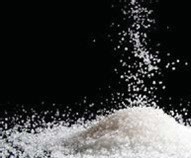 | White refined sugar for Industrial use. The industrial sugars category includes sweeteners that service food and confectionary manufacturers, as well as the catering, baking, pharmaceutical and beverage industries | Duty remission to 10% on imported white refined industrial sugar for industrial use. |
 | Treads for cold retreading used in retreading of tyres. The tread of a tyre or track refers to the rubber on its circumference that makes contact with the road or the ground. | Duty remission to 0% for manufacturers of motor vehicle tyres under the duty remission scheme in accordance with section 140 of the East African Community Customs Management |
| Retread, also known as “recap,” or a “remold” is a re-manufacturing process for tyres that replace the tread on worn tyres | Act, 2004. | |
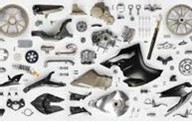 | Unassembled (Complete Knocked Down) motor cycle kits imported by approved local assemblers of motor cycles | Imported at import duty rate of 10% under duty remission scheme in accordance with section 140 of the East African Community Customs Management Act, 2004. Imported at import duty rate of 0% under duty remission scheme in accordance with section 140 of the East African Community Customs Management Act, 2004 |
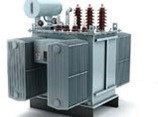 | Raw materials and inputs used in the assembly of transformers and switch gear. | Imported at import duty rate of 0% under duty remission scheme in accordance with section 140 of the East African Community Customs Management Act, 2004 |
 | Raw materials for manufacture of sanitary towels and tampons | Remission of import duty rate of 0% under duty remission scheme in accordance with section 140 of the East African Community Customs Management Act, 2004 |
 | Inputs used for the production of solar panels | Remission of import duty rate 0% under duty remission of scheme in accordance with section 140 of the East African Community Customs Management Act, 2004 |
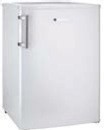 | Component parts and inputs for the assemblers of refrigerators and freezers. | Remission of import duty rate of 10% under duty remission scheme in accordance with section 140 of the East African Community Customs Management Act, 2004 |
 | Inputs and raw materials to use in the manufacture of food supplements for infants and nutrient deficient persons | Remission of import duty rate of 0% under duty remission scheme in accordance with section 140 of the East African Community Customs Management Act, 2004 |
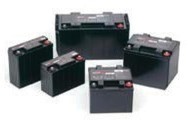 | Scrap batteries for manufacture of lead batteries | Remission of import duty rate of 0% under duty remission scheme in accordance with section 140 of the East African Community Customs Management Act, 2004. |
 | Inputs used in the production of gas cylinders imported by manufacturers of such cylinders | Duty remission to 0%under the duty remission scheme in accordance with section 140 of the East African Community Customs Management Act, 2004. |
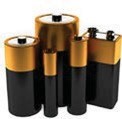 | Inputs for the manufacture of dry cell batteries. | Duty remission to 0% under the duty remission scheme in accordance with section 140 of the East African Community Customs Management Act, 2004. |
 | Inputs for manufacture of matches and match boxes. | Duty remission to 0% under the duty remission scheme in accordance with section 140 of the East African Community Customs Management Act, 2004. |
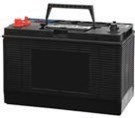 | Inputs for the manufacture of deep cycle batteries | Duty remission to 0%under the duty remission scheme in accordance with section 140 of the East African Community Customs Management Act, 2004. |
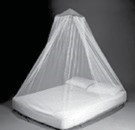 | Materials for manufacture of mosquito nets | Exempted from all taxes under the 5th schedule of the East African Community Customs Management Act, 2004. |
 | Inputs for use in the manufacture of medical diagnostic kits imported by manufacturers of medical diagnostic kits as approved by a Director medical services | Exempted from all taxes under the 5th schedule of the East African Community Customs Management Act, 2004 |
 | Packing materials and raw materials for the manufacture of medicaments | Exempted from all taxes under the 5th schedule of the East African Community Customs Management Act, 2004. |
 | Iron and steel products for manufacture of automobile leaf springs, bolts and nuts | Duty remission on inputs to 0% under the duty remission scheme in accordance with section 140 of the East African Community Customs Management Act, 2004. |
 | Trigger spray and lotion pumps for the manufacture of cosmetic containers | Duty remission on inputs to 0% under the duty remission scheme in accordance with section 140 of the East African Community Customs Management Act, 2004 |
 | Other soap in other forms – Soap Noodles | Import duty is applicable at a rate of 10% for one year. |
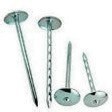 | Umbrella heads for roofing nails | Import duty remitted from 25% to 10% for the manufacture of roofing nails. |
 | Inputs for the manufacture of toothbrushes | Granted duty remission at 0% on inputs for the manufacture of tooth brushes under the duty remission scheme in accordance with section 140 of the East African Community Customs Management Act, 2004. |
 | Inputs used in the manufacture of pesticides, fungicides, insecticides and acaricides as approved by the Ministry of Agriculture | Granted duty remission at 0% on inputs used in the manufacture of pesticides, fungicides, insecticides and acaricides as approved by the Ministry of Agriculture. |
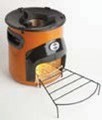 | Inputs used in the manufacture of energy stoves. | Granted duty remission at 0% on inputs used in the manufacture of energy saving stoves |
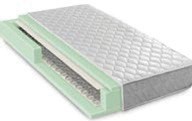 | Jacquard Material for Making Spring mattresses (printed with Logo) | Import duty applicable at a rate of 10% for one year instead of 25%. |
 | Poly Cotton Material for making mattresses | Import duty applicable at a rate of 10% for one year. To support the textile sector by increasing availability of these materials. |
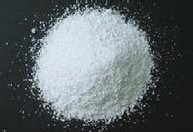 | Poly Vinyl Alcohol | Lucida Sans |
 | Wheat Grain | Import duty is applicable at a rate of 10% instead of 35% for one year |
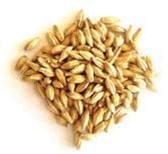 | Barley | Import duty is applicable at a rate of 10% instead of 25% for one year |
 | Aerosol cans | Duty remission to 0% instead of 10% for one year under the duty remission scheme in accordance with section 140 of the East African Community Customs Management Act, 2004. |
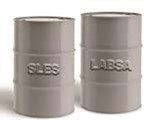 | Organic surface active agents (Anionic) (LABSA) | Duty remission to 0% instead of 10% for one year under the duty remission scheme in accordance with section 140 of the East African Community Customs Management Act, 2004. |
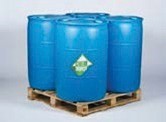 | Organic surface active agents (Cationic) | Duty remission to 0% instead of 10% for one year under the duty remission scheme in accordance with section 140 of the East African Community Customs Management Act, 2004. |
 | Unassembled (CKD) hot water kettles-inputs for assembly of hot water kettles | Granted duty remission rate of 0% for one year under the duty remission scheme in accordance with section 140 of the East African Community Customs Management Act, 2004. |
 | Unassembled (CKD) DVD players-inputs for assembly of DVD players | Granted duty remission rate of 0% for one year under the duty remission scheme in accordance with section 140 of the East African Community Customs Management Act, 2004. |
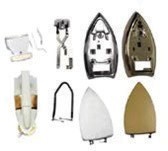 | Unassembled flat iron (CKD)-inputs for assembly of flat iron | Granted duty remission rate of 0% for one year under the duty remission scheme in accordance with section 140 of the East African Community Customs Management Act, 2004. |
 | Unassembled (CKD) blenders-inputs for assembly of blenders | Granted duty remission rate of 0% for one year under the duty remission scheme in accordance with section 140 of the East African Community Customs Management Act, 2004. |
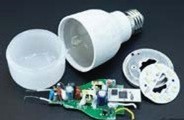 | Unassembled (CKD) LED, CFL bulbs – inputs for assembly of LED & CFL bulb | Granted duty remission rate of 0% for one year under the duty remission scheme in accordance with section 140 of the East African Community Customs Management Act, 2004. |
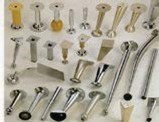 | Unassembled floor, table and wall fans | Granted duty remission rate of 10% for one year under the duty remission scheme in accordance with section 140 of the East African Community Customs Management Act, 2004. |
 | Unassembled Cookers | Granted duty remission rate of 0% for one year under the duty remission scheme in accordance with section 140 of the East African Community Customs Management Act, 2004. |
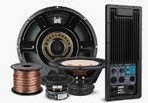 | Listed inputs for the manufacture of furniture | Granted duty remission rate of 0% and 10% under the duty remission scheme in accordance with section 140 of the East African Community Customs Management Act, 2004. |
 | Steel Blanks for Spoons and forks | Granted duty remission rate to 10% for one year under the duty remission scheme in accordance with section 140 of the East African Community Customs Management Act, 2004. |
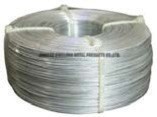 | Stranded wire, ropes and cables for the manufacture of toughened and laminated glass | Granted duty remission rate to 0% for one year under the duty remission scheme in accordance with section 140 of the East African Community Customs Management Act, 2004. |
 | Other plates, sheets, film, foil and strip, of plastics, non-cellular and not reinforced, laminated, supported or similarly combined with other materials. Of poly (vinyl butyral) for the manufacture of Toughened and laminated glass. | Granted duty remission rate of 0% for one year under the duty remission scheme in accordance with section 140 of the East African Community Customs Management Act, 2004. |
 | Listed inputs for the manufacture of baby diapers | Granted duty remission to 0% for one year under the duty remission scheme in accordance with section 140 of the East African Community Customs Management Act, 2004. |
| Listed inputs for the manufacture of textiles(garments) | Granted duty remission to 0% and 10% for one year under the duty remission scheme in accordance with section 140 of the East African Community Customs Management Act, 2004 | |
| Listed inputs for the manufacture of footwear (shoes) | Granted duty remission to 0% & 10% for one year under the duty remission scheme in accordance with section 140 of the East African Community Customs Management Act, 2004 | |
 | Inputs for the manufacture of edible salt of sub-heading 2501.00.00 | Granted duty remission to 10% for one year under the duty remission scheme in accordance with section 140 of the East African Community Customs Management Act, 2004 |
 | Inputs for the assembly / manufacture of mobile phones | Granted duty remission to 0% for one year under the duty remission scheme in accordance with section 140 of the East African Community Customs Management Act, 2004 |
 | Parts of chains for assemblers of chains for motorcycles, bicycles and industrial machinery | Granted duty remission to 0% for one year under the duty remission scheme in accordance with section 140 of the East African Community Customs Management Act, 2004 |
| High tensile galvanized wire restricted to only companies having the capacity to manufacture power cables. | Granted duty remission to 10% for one year under the duty remission scheme in accordance with section 140 of the East African Community Customs Management Act, 2004 | |
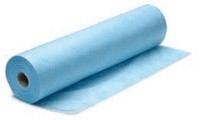 | Inputs to manu-facture essential medical products and supplies including masks, sanitizers, cover- alls, face shields and ventilators | Granted duty remission to 0% for one year under the duty remission scheme in accordance with section 140 of the East African Community Customs Management Act, 2004 |
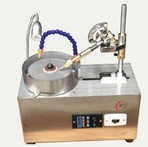 | Listed equipment for polishing and Heating gemstones | Granted duty remission to 0% for one year under the duty remission scheme in accordance with section 140 of the East African Community Customs Management Act, 2004 |
 | Odoriferous mixtures of a kind used as raw materials in the food or drink industries | Granted duty remission to 0% for one year under the duty remission scheme in accordance with section 140 of the East African Community Customs Management Act, 2004 |
 | Various goods entering export processing zone or Freeport strictly for manufacturing of goods for export. “export processing zone” means a designated part of Customs territory where any goods introduced are | Goods entering an export processing zone or a Freeport shall be exempt from duty in accordance with the East African Community Customs Management Act |
| generally regarded, in so far as import duties and taxes are concerned, as being outside Customs territory but are restricted by controlled access | ||
 | Plant and machinery | VAT deferment where payment of VAT at importation on specified imports is postponed to a future date. The cost of the plant and machinery should be at least $22,500 and above. |
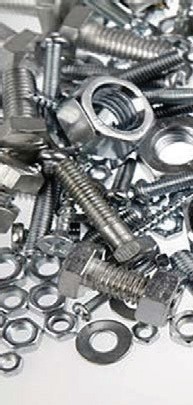 | Industrial replacement spare parts A spare part is a duplicate part to replace a lost or damaged part of a machine. Parts should be imported as replacement parts used exclusively on industrial machinery classified in Chapters 84 and 85 of the EAC Common External Tariff Should be imported by registered manufacturers Should not be for resale or any other commercial purpose other than for replacement of worn out or obsolete parts of industrial machines subject to such conditions as the commissioner may impose | Exempted from all taxes under the fifth schedule of the East African Community Customs Management Act, 2004. |
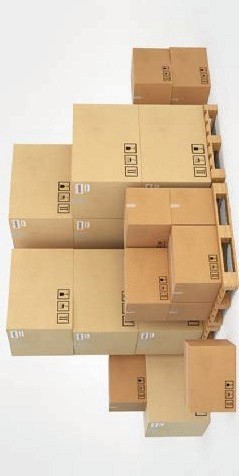 | Containers and Pallets used for packaging. Containers, including boxes, tins, bottles, jars and other packages in which any goods not liable to ad valorem duty are packed and imported being | Exempted from all taxes under the fifth schedule of the East African Community Customs Management Act, 2004. |
| ordinary trade packages for the goods contained there in Containers specially designed and equipped for carriage by any mode of transport Imported containers which the commissioner is satisfied on the recommendation of the director veterinary services that it is specially designed for storing semen for artificial insemination Any other packing material of any kind designed for packing goods for export | ||
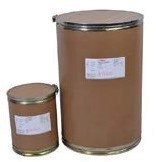 | Pallets and pre-packing slings designed for packaging goods for export | Exempted from all taxes under the fifth schedule of the East African Community Customs Management Act, 2004. |
| EXCISE DUTY |
| Type of incentive | Type of incentive |
| Nil duty on construction materials of a factory or warehouse exclusive of those available on the local market, locally produced raw materials and inputs. | A minimum capital investment requirement for duty exemption of US$10 million in the case of a foreigner or US$ 300,00 in case of a citizen; or US$150,000, for a citizen whose investment is placed up country. The business that qualifies for duty exemption; is required to employ at least 70% of its employees being citizens, earning an aggregate wage of at least 70% of the total wage bill. |
| Nil duty on construction materials for development of industrial parks or free zones by a developer | Must invest a minimum of USD 50m for foreign investors & USD 10m for EAC citizens. The incentive takes effect from the date of commencement of construction. |
| Duty remission Where the Commissioner is satisfied that a plastic product • Is for use in packaging of products for export • Is for use in packaging medicaments • Is manufactures from recycled plastics, the Commissioner will grant a refund of excise duty paid. | The Commissioner shall not remit excise duty paid on plastic product manufactured from recycled plastics & plastic packaging for medicaments, unless the recycled plastic used in the manufacture of the plastic packaging is equivalent to at least 50 % of the raw material used.” |
| Nil excise duty on construction materials of a manufacturer, whose investment capital is, at least 50 million US Dollars or, in the case of any other manufacturer, who makes an additional investment equivalent to 50 million US Dollars | Excludes a manufacturer dealing in agro processing, food processing, medical appliances, building materials, light industry, automobile manufacturing and assembly, household appliances, furniture, logistics and warehousing, information technology, or commercial farming. |
| STAMP DUTY |
| Type of incentive | Conditions for granting exemption |
| Nil Stamp duty on debentures, lease of land, Increase of share capital, transfer of land. | Developer of an industrial park/free zone a) Capacity to use at least 50% of the locally produced raw materials, subject to availability. b) Capacity to employ a minimum of one hundred citizens c) Must invest a minimum of USD 50m And incentive takes effect from the date of commencement of construction |
| No stamp duty on execution of the following documents; i) debenture; whether a mortgage debenture or not, being of a marketable security – of total value; ii) further charge; any instrument imposing a further charge on a mortgaged property –of total value; iii) lease of land – of total value; iv) increase of share capital; v) transfer of land; vi) an agreement to provide services on conducting a feasibility study or developing a design for construction.”; | a) In case of a new manufacturer, who is subject to availability, has capacity to use at least 70% of the locally produced raw materials, and employs at least 70% citizens with an aggregate wage bill of the new manufacturer and whose investment capital is at least 50 million US Dollars b) In case of an existing manufacturer who subject to availability has capacity to use at least 70% of the locally produced raw materials, and employs at least 70% citizens with an aggregate wage bill of the existing manufacturer from the date on which the manufacturer makes an additional investment equivalent of 50 million US Dollars |
| Nil Stamp duty on debentures, lease of land, Increase of share capital, transfer of land. | Operator within an industrial park or free zone or an operator of a single factory or other business outside the industrial park who invests in agro processing, food processing, medical appliances, building materials, light industry, automobile manufacturing and assembly, household appliances, furniture, logistics and warehousing, information technology or commercial farming, operating vocational or technical institutes. Must invest a minimum of USD 10m for foreign investors and USD 300,000 for EAC citizens or USD 150,000 where the investment is made upcountry. Incentive takes effect from the date of commencement of the specified business, same incentives applies to an existing operator in an Industrial Park or Free Zone. The investor must use at least 70% of locally sourced raw materials and employ at least 70% EAC citizens who must take up at least 70% of the wage bill. |
| VAT |
| Type of incentive | Conditions for granting exemption |
| Exporters | Zero rated |
| Nil VAT on any payment for feasibility studies, design construction services, construction materials and earth moving equipment and machinery. Developer of an industrial park or free zone | The investment must be at least USD 50m. The development must be for an industrial park or free zone. |
| Nil VAT on the supply of feasibility study and design services and on the supply of locally produced raw materials and inputs. | Investment in processing agricultural products; manufacturing or assembling medical appliances, medical sundries or pharmaceuticals, building materials, automobiles and house hold appliances; manufacturing furniture, pulp, paper, printing and publishing of instructional materials; establishing or operating vocational or technical institutes; or carrying on business in logistics and warehousing, information technology or commercial farming. Must invest a minimum of USD 10m for foreign investors and USD 300,000 for EAC citizens or USD 150,000 where the investment is made upcountry. Incentive takes effect from the date of commencement of the specified business, same incentives applies to an existing operator in an Industrial Park or Free Zone. The investor must use at least 70% of locally sourced raw materials and employ at least 70% EAC citizens who must take up at least 70% of the wage bill. |
| VAT registered persons claim all the VAT incurred. | Turnover of UGX 150m in any 12 month period for first time registration, ability to keep proper books of accounts and making taxable supplies. |
| Nil VAT on the supply of liquefied gas and denatured fuel ethanol from cassava | |
| Nil VAT on the supply of services to a manufacturer other than [a manufacturer who engages in supply of locally produced materials for construction of a factory or warehouse and the supply of locally produced raw materials andinputs or machinery and equipment to an operator within an industrial park, free zone or an operator within a single factory or other business outside the industrial park or free zone]. | The investment capital of this manufacturer should be at least USD 30 million for a foreign investor or USD 5 million for a local investor, to conduct a feasibility study or to undertake design and construction, or in the case of any other manufacturer from the date on which the manufacturer makes an additional investment equivalent to USD 30 million for a foreign investor or USD 5 million for a local investor; |
| who has capacity to use at least 70 percent of the raw materials that are locally sourced, subject to their availability, and Who has capacity to employ at least 70 percent of the employees that are citizens earning an aggregate wage of at least 70 percent of the total wage Bill. | |
| Deemed VAT: Tax payable on a taxable supply made by a supplier to a contractor executing an aid-funded project is deemed to have been paid by the contractor provided the supply is for use by the contractor solely and exclusively for the aid funded project. | Contractors executing aid-funded projects |
| The supply of drugs, medicines and medical sundries manufactured in Uganda are zero rated | Contractors executing aid-funded projects |
| A tax refund of 5% of the VAT amount, to be paid back to consumers who purchase goods or services from a taxable person and is issued with an electronic receipt or invoice. worth five million shillings. | Purchase should be worth five million shillings within a consecutive period of thirty days. |
| INCOME TAX |
| Type of incentive | Conditions for granting exemption |
| 6% WHT exemption | 6 months renewable Where the Commissioner is satisfied that the taxpayer has regularly complied with the obligations under the tax laws |
| Cost of constructing an approved Industrial Building | A person who incurs expenditure in constructing a building to be used as a factory/ manufacturing premise, and the factory/manufacturing premise is being used in generating income, is allowed a deduction in his return (Industrial Building Deduction) at a rate of 5% per year for a period of 20 years from the time he starts using the building. |
| Recognition of losses | If for any year of income, the total business income earned by a taxpayer is less than the total expenses relating to the generation of the business income, the excess (loss) shall be carried forward and allowed as a loss in the following year. Note that it must be declared and proved by URA in the current year of income as a loss. |
| Wear and Tear | Wear and Tear allowance is granted for assets and equipment’s owned by the entity and registered in the business names. The rates are as provided for in the Income Tax Act. |
| Allowable deduction of purchase expense from a supplier designated to use e-invoicing system | Allowable deduction of purchase expense from a supplier designated to use e-invoicing system. These suppliers will be gazetted and these expenses should be supported by e-invoices or E-receipts. |
| 100% deduction of Scientific research expenditure | A person who incurs expenditure for scientific research |
| 100% deduction of Scientific research expenditure | A person who incurs expenditure for scientific research |
| 100% deduction of Scientific research expenditure | 100% deduction of Scientific research expenditure |
| 100% deduction of training expenditure | Employers who train permanent residents or provide tertiary education not exceeding in the aggregate 5 years |
| 10 year Exemption of income derived from renting out or leasing facilities established in an industrial park or free zone. | Must invest a minimum of USD 50m for foreign investors or USD 10m for EAC citizens, Incentive takes effect from the date of commencement of construction. Also applies to an existing investor making an additional investment of the same value |
| 10 year Exemption of Income derived by a person from undertaking any of the listed business activities in the Industrial Park or Free Zone. | Operator in an Industrial Park or Free Zone who invests in processing agricultural products; manufacturing or assembling medical appliances, medical sundries or pharmaceuticals, building materials, automobiles and house hold appliances; manufacturing furniture, pulp, paper, printing and publishing of instructional materials; establishing or operating vocational or technical institutes; or carrying on business in logistics and warehousing, information technology or commercial farming or manufacture of tyres, footware, mattresses or tooth paste. Must invest a minimum of USD 10m for foreign investors and USD 300,000 for EAC citizens or USD 150,000 where the investment is made upcountry. Incentive takes effect from the date of commencement of the specified business, same incentives applies to an existing operator in an Industrial Park or Free Zone. The investor must use at least 70% of locally sourced raw materials and employ at least 70% EAC citizens who must take up at least 70% of the wage bill. |
| 10 year exemption of Income derived by a person from undertaking any of the specified business activities. | Investor outside an industrial park or free zone carrying out activities listed above Must invest a minimum of USD 10m for foreign investors and USD 300,000 for EAC citizens or USD 150,000 where the investment is made upcountry. Incentive takes effect from the date of commencement of the specified business, same incentives applies to an existing operator in an Industrial |
| Park or Free Zone. The investor must use at least 70% of locally sourced raw materials and employ at least 70% EAC citizens who must take up at least 70% of the wage bill. | |
| Exemption of Income derived by a person from undertaking the agro – processing. | One Year. May be renewed annually Investor must use plant and machinery that has not previously been used in Uganda, apply for and be issued with a certificate of exemption from URA and must be tax compliant. |
| Exemption of Income derived from the exportation of finished consumer and capital goods | 10 years. Exemption valid from the beginning of the investment. Investor must export at least 80% of production. Investor must apply for and be issued with a certificate of exemption. |
| Income tax exemption for Collective Investment Schemes | Must be licensed to operate as a collective investment scheme. Participants in the scheme should not have day to day control over the management of the property. Participants contributions and ultimate income/ profits must be pooled Property must be managed as a whole by the operator of the scheme |
| Double Taxation Agreements (DTA): Investors from countries with active DTA’s with Uganda i.e. United Kingdom, Denmark, Norway, South Africa, India, Italy, Netherlands and Mauritius. Withholding tax rates applicable to dividends, interests, management fees and royalties are 10% except UK at 15% | Beneficial owner of investment as defined in the Income Tax Act Established with economic substance in a country with which Uganda has a DTA. |
| Deduction of 2% Income tax for employers that employ PWDs | 5% of employees must be PWDs |
You will be required to meet your tax obligations through filing returns and making payments
• A tax return is the tax format of reporting business income for the year to
| URA and declares business profits or losses for tax purposes • A Tax period is the duration for which a return is required i.e. a year, month or week • Due date is the deadline for filing a return beyond which a person is required to pay a penalty for late filing |
| ANNUAL RETURNS |
| Tax Type | Provisional return due date | Final Return Due date |
| • Individual Income tax • Rental Income tax – Individual | The last day of the 3rd month after the start of the year of Income. | The last day of the 6th month after the end of the year of Income. |
| • Corporate income tax • Rental Income tax- Non individual | The last day of the 6th month after the start of the year of Income. | The last day of the 6th month after the end of the year of Income |
| • Presumptive/Small business income tax | – | The last day of the 6th month after the end of the year of Income. |
| Trust Income tax(Chargeable in the hands of beneficiary) | The last day of the 3rd month after the start of the year of Income. | The last day of the 6th month after the end of the year of Income. |
| Trust Income tax(Chargeable in the hands other than beneficiary) | The last day of the 6th month after the start of the year of Income. | The last day of the 6th month after the end of the year of Income. |
| Partnership Income tax | – | The last day of the 6th month after the end of the year of Income. |
| MONTHLY RETURNS |
| • With Holding Tax • PAYE • Excise Duty(Goods & Services) | – | By the 15th day of the following month. |
| • With Holding Tax • PAYE • Excise Duty(Goods & Services) |
Note:
The law provides for a separate quarterly return for non-resident suppliers of services deemed to be supplied in Uganda when made to non-taxable persons.
A taxable person who is providing services to a non-taxable person in Uganda and is engaged in providing services in connection to.
• Immovable property in Uganda;
• Radio or television broadcasting services received at an address in Uganda;
• Electronic Services delivered to a person in Uganda;
• Transfer, assignment, or grant of a right to use a copyright, patent, trademark, or similar right in Uganda;
• Telecommunication services other than those by a supplier of telecommunication services or services to a person who is roaming while temporarily in Uganda
These shall be required to file returns within 15 days after the end of the three consecutive calendar months.
Advance return
Advance Income Tax return is a return of income submitted by a taxpayer before the end of a given year of Income.
Instances when an advance Return is required.
i. Before the end of the period for which it is due
ii. At any time of any year of income, where a taxpayer has died, is bankrupt, wound up, gone into liquidation, is about to leave Uganda permanently or any other reason where the Commissioner considers appropriate that such a taxpayer may be required to file an advance return by a specified date. Where an Advance Return is not furnished by the due date, an Advance Assessment is issued.
Note:
A notice requesting for such a return shall be in writing specifying the due date for filing the return.
Extension of Return Filing date
If a person is not able to file a return, he can apply for an extension to file his return providing reasons justifying the extension.
The extension if granted will not exceed 90 days and does not change the due date for payment of the tax due. Interest will therefore accrue on any outstanding tax liability.
However multiple extensions can be applied for provided the number of days does not exceed 90 days.
Note: If the taxpayer is dissatisfied with the Commissioner’s decision about the extension, he may challenge it under the objection and appeals procedure.
Offences and penalties on returns
Failure to furnish a return by the due date
The penalty for failure to furnish a tax return by the due date or within a further time allowed by the Commissioner to a fine not exceeding Shs.1,000,000 and failure to furnish the return within the time prescribed by court to a fine not exceeding Shs. 2,000,000 on conviction.
Understating provisional tax estimates
If you understate provisional chargeable income by more than 10% of the actual chargeable income, the penalty is 20% of the difference in tax on your estimated income and 90% of the actual chargeable income.
Penalty = 20% (Tax on Estimated chargeable Income-Tax on 90% of actual Changeable income)
Providing False statements
The penalty for knowingly or recklessly making false or misleading statements or omitting from a statement to a tax officer, a matter or thing is a fine not exceeding two hundred currency points that is Shs. 4,000,000 or imprisonment not exceeding ten years or both on conviction.
He will receive an assessment from the URA officer.
An assessment is a document/ form showing the estimated taxable income of a person and the tax payable on it including any penalty
This is a tax assessment made to a person based on estimated taxable income of that person. It is generated and issued by the Commissioner due to failure by the taxpayer to furnish a self-assessment return for any given tax period.
Is a declaration issued if the Commissioner is satisfied that there is a risk that a taxpayer may delay, obstruct, prevent, or render ineffective payment or collection of tax that has not yet become due.
It may be made before the date on which the taxpayer’s tax return for the period is due.
It can be issued if a taxpayer defaults in submitting an advance return when requested by the Commissioner. However the Commissioner can also issue this assessment without notice.
This assessment can be objected to and can also be amended.
Where the taxpayer files a returns for a given period on which a Default or Advance assessments was issued, the taxpayer’s return for that period shall be accepted and takes precedence over the default assessment.
47
The penalty for failure to furnish a tax return by the due date or within a further time allowed by the Commissioner to a fine not exceeding Shs. 1,000,000 and failure to furnish the return within the time prescribed by court to a fine not exceeding Shs. 2,000,000 on conviction.
Understating provisional tax estimates
If you understate provisional chargeable income by more than 10% of the actual chargeable income, the penalty is 20% of the difference in tax on your estimated income and 90% of the actual chargeable income.
Penalty = 20% (Tax on Estimated chargeable Income-Tax on 90% of actual Changeable income).
Providing False statements
The penalty for knowingly or recklessly making false or misleading statements or omitting from a statement to a tax officer, a matter or thing is a fine not exceeding two hundred currency points that is Shs. 4,000,000 or imprisonment not exceeding ten years or both on conviction.
He will receive an assessment from the URA officer.
An assessment is a document/ form showing the estimated taxable income of a person and the tax payable on it including any penalty
This is a tax assessment made to a person based on estimated taxable income of that person. It is generated and issued by the Commissioner due to failure by the taxpayer to furnish a self-assessment return for any given tax period.
Is a declaration issued if the Commissioner is satisfied that there is a risk that a taxpayer may delay, obstruct, prevent, or render ineffective payment or collection of tax that has not yet become due.
It may be made before the date on which the taxpayer’s tax return for the period is due.
It can be issued if a taxpayer defaults in submitting an advance return when requested by the Commissioner. However the Commissioner can also issue this assessment without notice.
This assessment can be objected to and can also be amended.
Where the taxpayer files a returns for a given period on which a Default or
48
Advance assessments was issued, the taxpayer’s return for that period shall be accepted and takes precedence over the default assessment.
Taxpayer is allowed to submit his/her return together with the objection.
This is an amendment of an original tax assessment issued by the commissioner for any tax period to ensure that correct tax liability is obtained.
It is made at any time where fraud or any gross or wilful neglect has been committed by, or on behalf of the taxpayer or new information has been discovered in relation to the tax payable for a tax period.
A taxpayer may amend the tax return on condition the return is not under investigation and amendment is done within 3 years from the date on which the original return was lodged by the taxpayer.
WHAT NEXT AFTER FILING THE RETURN?
The taxpayer will be required to register a payment and then pay.
Note; The due date of making the payment is the due date of filing the return. HOW DOES ONE REGISTER A PAYMENT?
To register a tax payment, Visit the web portal (ura.go.ug) Click on eservices, select Payment Registration under payments.
Select the tax head, go to details of Tax Type, select the tax head from the drop down and input the tax amount.
Fill in the details of the Taxpayer and bank mode of payment (VISA, MasterCard, American Express, Union Pay, Mobile Money, EFT, RTGS and Swift, Cash, Cheque, Demand draft, or Point of Sale), enter the given image and click Accept and Register.
Print out the Payment Registration Slip that appears on submission and take the form to the bank to effect payment.
MODES YOU CAN USE TO PAY TAX.
Payment for any tax type can be done using;
VISA, MasterCard, American Express, Union Pay, Mobile Money, EFT, RTGS and Swift, Cash, Cheque, Demand draft, Point of Sale
All taxpayers are required to pay the tax liable by the due date.
Any unpaid tax shall be collected by the Commissioner through serving a notice of demand on the person liable.
49
The taxpayer will be given at least 28 days from the date of service of the notice within which they can pay any outstanding amount specified in the demand notice.
Failure to pay attracts interest at a rate of 2%.per month the tax is not paid.
If a taxpayer has any outstanding liability and pays any amount, the payment will be allocated in the order of PPI (Principal tax liability, penal tax and Interest due).
If a taxpayer has more than one tax liability at the time a payment is made, the amount will be used to clear the oldest / earliest liability first in the same order as above (PPI).
A taxpayer can apply in writing to the Commissioner for an extension to pay tax at a later date.
The date of payment can be extended but the payment due date is maintained. Interest shall accrue from the due date of the payment.
WHAT HAPPENS TO A TAXPAYER WHO HAS BEEN ASSESSED AND IS DISSATISFIED?
The taxpayer has an option and a right to object to the decision against her/ him.
WHAT IS AN OBJECTION?
An objection is a communication from a taxpayer to the Commissioner expressing dissatisfaction with either an assessment raised on him/her or any other tax decision made by the Commissioner.
This is always presented in the format prescribed by the Commissioner.
OBJECTION TIMELINES
• A person who is dissatisfied with any tax decision may lodge an objection with the Commissioner within 45 days after receiving notice of the tax decision.
• A person may apply in writing to the Commissioner for an extension of time to lodge an objection and wait for the Commissioner’s decision.
• The Commissioner will serve a notice of an objection decision to the person objecting within 90 days from the date of receipt of the objection.
• In case an objection decision has not been served within 90 days, the person objecting may, by notice in writing to the Commissioner, consider
the Commissioner as having allowed his objection decision. This is called “electing”
• The time limit for making an objection decision is waived in case a review of a taxpayer’s records is necessary for settlement of the objection and the taxpayer is notified.
• A person dissatisfied with an objection decision may;
a) Apply to the Commissioner to resolve the dispute using alternative dispute resolution procedures. This may present other avenues for taxpayers who would like to review tax decisions issued by URA without necessarily lodging an appeal to the Tax Appeals Tribunal.
b) Lodge an application to the Tax Appeals Tribunal (TAT) for review of the objection decision.
• A person dissatisfied with a decision of the Tribunal may, within 30 days after being served with a notice of the decision, lodge an application with the High Court for review of the decision.
• A person dissatisfied with a decision of the High Court, arising from appeals to the TAT, may, within 30 days after being served with a notice of the decision or within further time as the Court of Appeal may allow, lodge an application with the Court of Appeal for review of the decision. This appeal will be on questions of law only.
• The Court of appeal shall inquire and determine the appeal expeditiously and shall declare its findings not later than 60 days from the date of filing the appeal.
• An appeal to the Supreme Court may be lodged with a certificate of the court of appeal that the matter raises questions of law of great public importance or if the Supreme Court in its overall duty to see that justice is done, considers that the appeal should be heard.
• The Supreme Court shall inquire and determine the appeal expeditiously and shall declare its findings not later than 30 days from the date of filing the appeal.”
• Where the decision maker is required to refund an amount of tax to a person as a result of a decision of a reviewing body, the tax shall be repaid with interest at the rate specified in the relevant law on the amount of the refund for the period commencing from the date the
person paid the tax refunded and ending on the last day of the month in which the refund is made.
Reviewing body means the Tribunal, the High Court, the Court of Appeal and the Supreme Court
In any objection proceeding;
a. It is upon the tax payer to prove that the assessment is incorrect
OR
b. In case of a decision made to prove that the decision should not have been made or should have been made differently.
COLLECTION OF TAX FROM PERSONS LEAVING UGANDA PERMANENTLY
The Commissioner may issue a certificate containing particulars of the tax payable to the officer responsible for immigration control and request the Commissioner for Immigration to prevent that person from leaving Uganda until that person;
(a) Makes payment of the tax in full; or
(b) Executes a financial bond guaranteeing payment of the tax liability.
When a person refuses or fails to comply with payment of taxes as and when required, the commissioner may collect the outstanding tax using various methods, such as:
• By Distress: Goods on which the assessed person has a claim are sold in order to recover tax.
• By Agency Notice: Any other person who has money or other liabilities of the person to whom tax is assessed and being demanded from , is required to pay the amount held directly to URA.
• Temporary closure of business premises.
• Charge over immovable property: The Commissioner writes to the Registrar of Titles, directing the Registrar to the effect that the land or buildings in the notice are a subject of a security for unpaid tax.
• Seizure of goods in cases where there is proof that the taxes due have not been paid especially in respect of the supply, removal or import of the goods.
Note:
If there is reason to believe that;
(a) A taxpayer establishing a business in Uganda intends to carry on the business for a limited time only; or
(b) A taxpayer may not pay tax when it becomes payable.
The Commissioner may write to a taxpayer to give security by bond, deposit, or anything else that is satisfactory to the Commissioner for the payment of tax that may become payable.
ACCESS to premises, records and any information
The Commissioner is entitled to have at all times and without prior notice, full and free access to;
52
(i) Any premises or place;
(ii) Any record, including a record in electronic format; or
(iii) Any data storage device
Make an extract or copy, seize any record, data storage device that may contain data relevant to a tax obligation; and retain any record or data storage device seized for as long as it is required for determining a taxpayer’s tax obligation and liability, including any proceedings.
The Commissioner may, request any person;
(a) To furnish, any information or
(b) To attend and be examined at the time and place designated for that purpose concerning the tax affairs of that person or any other person, and for that purpose the Commissioner may require the person to produce any record, including an electronic format, in the control of the person.
• A tax payer providing a passenger transport service; or a freight transport service with a goods vehicle with a capacity of two tones or more.
• A tax payer providing ware housing or clearing and forwarding services.
• A taxpayer supplying goods or services to the Government.
• Failure to furnish a return or any other document
• Failure to comply with an agency notice or the requirements of a receiver
• Failure to maintain proper records
• Failure, without good cause, to comply with a request for information
• Improper use of a taxpayer identification number
• Making false or misleading statements
• Obstructing an officer
• Aiding and abetting another person to commit an offence.
• Offering bribes to officers
i. For Associations, mobilize your members and invite URA to sensitize them.
ii. For Tax payers in the Manufacturing sector
• Register for taxes
• Periodically assess yourselves by filing returns and Pay liabilities due (or claim refunds) by the due dates to avoid any penalties and interest that may
53
accrue due to non-compliance
• Always attend URA Tax clinics whenever called upon
• Engage URA as much as possible to avoid being misled about taxes
• One of URA’s focus areas this Financial Year is going to be the manufacturing sector thus we urge traders to fully participate and attend URA Tax Clinics and Workshops when called upon
Taxpayer Registration Expansion Program is being implemented to ease the registration process and compliance process.
i. THE TAX PROCEDURES CODE ACT, 2014.
ii. THE INCOME TAX ACT (IT A), CAP.340
iii. THE VALUE ADDED TAX ACT (VAT A), CAP.349
iv. THE EXCISE DUTY ACT,2014
v. THE EAST AFRICAN COMMUNITY CUSTOMS MANAGEMENT


